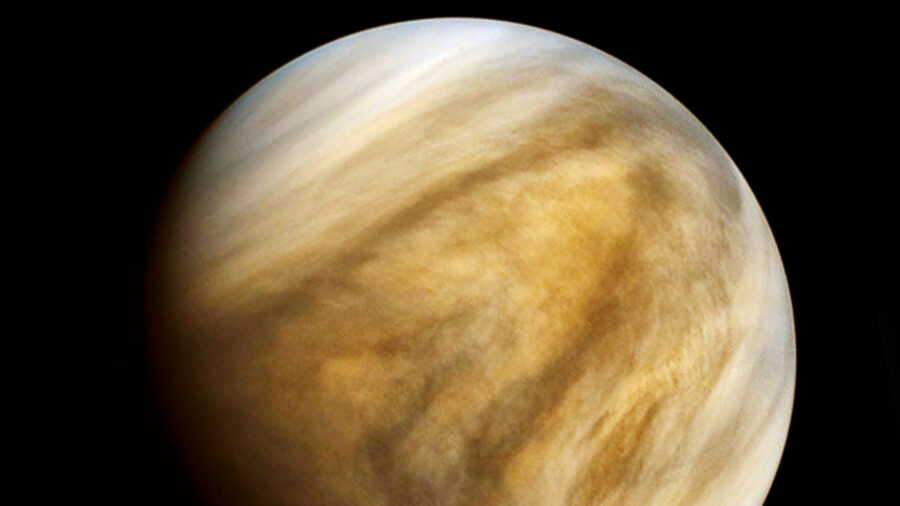Oxygen Detected In Venus’ Atmosphere

Good news for science lovers (via ScienceAlert): astronomers led by physicist Heinz-Wilhelm Hübers of the German Aerospace Center achieved a remarkable feat—detecting atomic oxygen in Venus’s dayside atmosphere.
The discovery unveils new insights into the planet’s atmospheric dynamics and circulation.
Significantly deepening our understanding of how the Venus’s atmosphere operates, the incredible and direct detection testifies to the impressive ingenuity of planetary science.
The Contrasting Venus Environment

Often referred to as Earth’s twin due to its comparable mass and composition, the faraway planet nonetheless demonstrates an extremely contrasting environment to our own.
While Earth’s climate is lush and teeming, the Venusian environment is… anything but. Not to be dramatic, but Venus’s planetary conditions are more akin to Dante’s Inferno than our pale blue dot.
Planet Temperature

Enveloped by thick clouds infused with carbon dioxide, Venus hosts a surface positively sizzling at nearly 464 degrees Celsius (867 Fahrenheit).
If that doesn’t make you want to move there, it also endures wildly screaming wind gusts, ones clocking up to 700 kilometers per hour. These roaring tempests far surpass the highest wind speeds recorded on Earth.
Confirmed Oxygen

Although fascinating, the Venus discovery is not unprecedented—previous studies detected and confirmed oxygen on the planet’s nightside.
Still, the Venus dayside remained a veritable mystery until Hüber’s team undertook their groundbreaking observations.
Utilizing the capabilities of the Stratospheric Observatory for Infrared Astronomy (SOFIA), the scientists irrefutably identified the elusive atomic oxygen on the dayside.
Oxygen Atom

Atomic oxygen comprises single atoms and differs from molecular oxygen (O2), which consists of two (as the “2” in its name would suggest) oxygen atoms.
As your high school chemistry teacher doubtlessly told you, molecular oxygen is essential for life on Earth.
Atomic oxygen’s single, highly reactive atom enjoy a brief existence in nature due to their frenetic tendency to bond with other atoms.
Atomix Oxygen On Earth

Here on Earth, Atomix oxygen is found at very high altitudes, where solar photons’ photodissociation of molecular oxygen can take place.
Venus’s carbon-dioxide-rich atmosphere is said to undergo a similar process, where molecules diverge into atomic oxygen and carbon monoxide.
An arduous task of data collection, SOFIA conducted three separate missions, collectively capturing data from 17 different Venusian locations.
These include seven on the dayside, nine on the nightside, and one on the dividing line between day and night—known as the terminator.
Altitude Is Important

The missions detected atomic oxygen peaking nearly 100 kilometers above the surface, wedged between two dominant atmospheric patterns: the super-rotating flow lying beneath 70 kilometers and the subsolar-to-antisolar flow suspended above 120 kilometers.
Scientifically speaking, this altitude factor is paramount. The area 100 kilometers above the surface embodies a transitional zone in Venus’s atmosphere, one unexplored until now.
Though not the sci-fi situation some might long for—involving aliens cruising through the planet’s atmosphere—the detection of atomic oxygen on Venus nonetheless hints at active and intriguing chemical processes.
Venus Atmospheric Conditions

It also provides a new and thrilling window into the dynamics of the Venusian atmospheric conditions.
What’s more, the magnitude of the discovery extends beyond Venus. Needless to say, experts aim to learn the mysterious reasons behind the divergent paths differentiating that planet from ours by understanding the former’s atmospheric conditions as extensively as possible.












